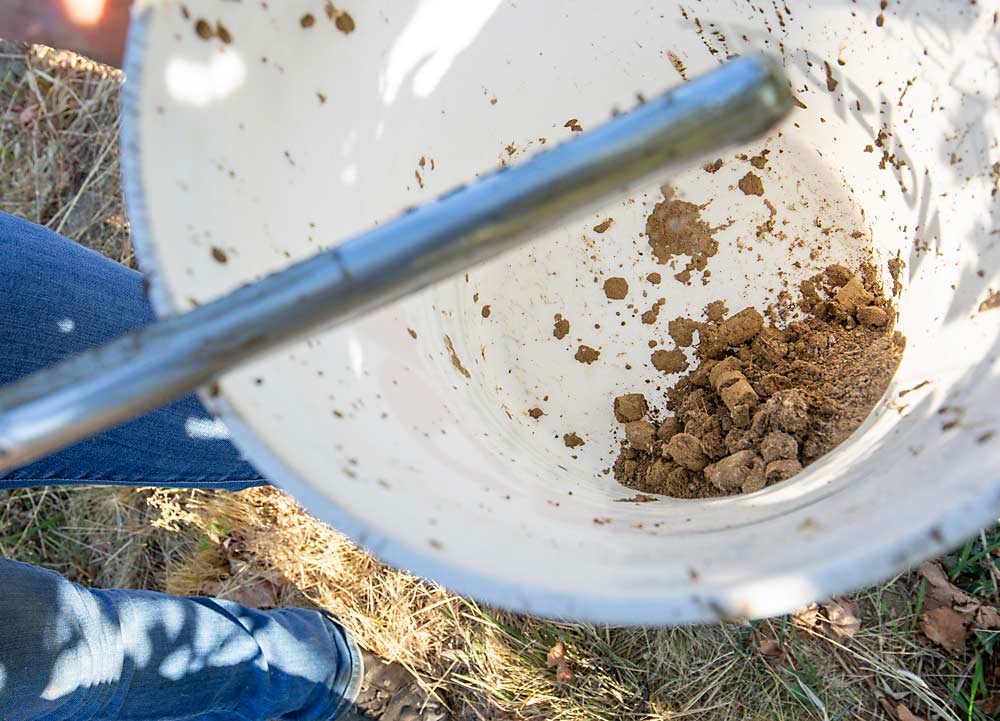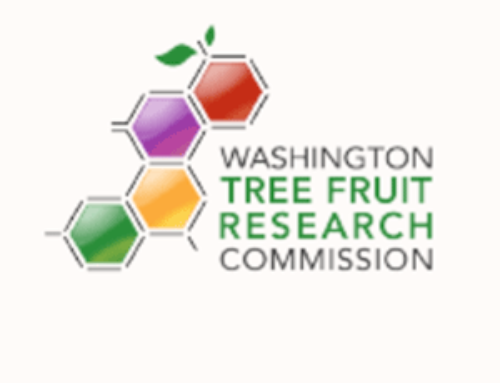
Nematode research webinar
Michelle Moyer, Washington State University viticulture extension specialist, will share details and insights of the nematode research during the WAVEx webinar on April 20, from 12:30 – 1:30 p.m. The webinar is free, but registration is required. (Go to: https://washingtonwine.zoom.us/webinar/register/WN_ouc6PfCsSRaNCoGul0_pVA.)
Washington Advancements in Viticulture and Enology (WAVE) is the Washington State Wine Commission’s seminar and webinar series focused on wine research. WAVEx is the condensed, shorter webinar series. WAVE and WAVEx events are co-sponsored by WSU and the Washington State Wine Commission.
For more information, visit: washingtonwine.org/wave.
Though Washington’s wine industry is considered relatively young, many vineyards planted years ago now show signs of aging and loss of productivity from winter injuries, virus, crown gall and such. As the industry enters a period of replanting, nematodes that previously were not a problem are now of great concern.
This period of replant was expected. Research supported by the Washington State Wine Commission on behalf of the state’s wine grape growers and wineries was initiated more than a decade ago to prepare for the eventual need to replant vineyards in soils where populations of plant-parasitic nematodes have built up over years of grape production. Though nematodes have been well studied in other wine regions, little was known about the microscopic roundworms in Washington vineyards, and growers have lacked basic preplant and postplant management knowledge needed for replanting decisions.
Additionally, most wine grape vineyards in Washington are planted on their own Vitis vinifera roots, which are susceptible to the nematodes found in Washington vineyards. Prior to this research, rootstocks had not been evaluated in Washington vineyards for their resistance to nematodes.
Two nematode species have economic impact in Eastern Washington vineyards: northern root-knot nematode (Meloidogyne hapla) and dagger nematode (Xiphinema americanum). Root-knot nematodes feed on roots, creating root galls that disrupt nutrient and water uptake and interfere with growth. Dagger nematodes transmit grapevine viruses such as tomato ringspot and fanleaf.
Previous research found the two nematodes in more than 60 percent of the Washington vineyards surveyed. Moreover, 20 percent of the surveyed vineyards had higher nematode numbers than the suggested thresholds that cause economic impact — 100 northern root-knot nematodes per 250 grams of soil or 25 dagger nematodes per 250 grams of soil. Vine death or failure to meet production goals has been reported from other wine regions when young vines were planted in soils that exceed economic-impact thresholds.
Long-term study
A long-term research project was established in Washington in 2014 to evaluate rootstock selection, preplant fumigation and management of nematodes in vineyard replant scenarios. The study is led by Washington State University’s Michelle Moyer, the statewide viticulture extension specialist, and U.S. Department of Agriculture’s Inga Zasada, a nematologist stationed in Corvallis, Oregon. They followed replanting trials in commercial vineyards in the Horse Heaven Hills American Viticultural Area and Red Mountain AVA, including assessment of preplant and replant strategies to reduce nematode population densities in vineyards, such as using cover crops and fallowing fields. Preliminary data from the preplant work with cover crops shows promise. A full report from the first three years of the cover crop work will be released later this year.
The Horse Heaven Hills vineyard had well-established populations of dagger and northern root-knot nematodes and was slated for replanting in 2015. Vines were treated with foliar glyphosate in fall 2014, and the existing vineyard infrastructure of trellis posts and irrigation lines remained in place. After the vines were killed, randomized treatments were conducted: no fumigation and fumigation with metam sodium applied through the drip line. Vines were removed after fumigation, and, in spring 2015, the vineyard was replanted to Chardonnay on six treatments: self-grafted; own-rooted; and four rootstocks — 1103 Paulsen, 101-14 Millardet et de Grasset, Teleki 5C and Harmony. Rootstocks were chosen for their resistance to root-knot nematodes, as reported from California trials against the southern root-knot nematode. Each of the six vine plantings had both fumigated and nonfumigated sections.
In addition to the Horse Heaven Hills vineyard, Moyer conducted a smaller nematode and fumigation trial in 2019 on Red Mountain AVA. This trial broadened the work on soil fumigation by including Telone (1,3-dichloropropene) as a soil fumigant, which was shanked into the soil, as well as drip-applied Vapam fumigant. The Red Mountain trial was replanted with Cabernet Sauvignon on its own roots and on five rootstocks.
A key objective of Moyer’s study was to learn if preplant fumigation of nematode-infested soils would provide an adequate solution for nematode management in own-rooted vineyards. Soil fumigation has worked well for annual crops, but there was a lack of data on short- and long-term effectiveness in Washington vineyards. She also wanted to compare nematode-resistant rootstocks to own-rooted vines in a replant scenario.
No cure-all
Fumigation effects were dependent on the nematode species. Fumigation was not an effective long-term solution for northern root-knot nematode on the own-rooted and self-grafted vines. While it initially reduced the second-stage juvenile (J2) population densities of northern root-knot nematode in the first year for the own-rooted and self-grafted vines, the effects were short-lived. In less than two years after fumigation, soil population densities of northern root-knot recovered in the own-rooted and self-grafted treatments and exceeded levels before fumigation. The population densities recorded were higher than proposed thresholds for management.
Conversely, fumigation was effective in suppressing dagger nematodes, and it took more than 3.5 years to detect dagger nematodes in the fumigated treatments.
The four nematode-resistant rootstocks had increased vigor when compared to the own-rooted and self-grafted vines by the third year of establishment and mostly supported lower northern root-knot population densities compared to the vinifera-rooted vines. Of concern was that by the third year of establishment, all rootstock treatments had measurable northern root-knot populations, indicating that none are fully resistant to northern root-knot nematodes. Although they can be classified as poor hosts to the northern root-knot nematode, they are not fully resistant. Also, none of the rootstocks were fully resistant to dagger nematodes.
As more Washington vineyards enter an era of replanting, growers now have additional information to help them consider both short- and long-term nematode management strategies. Depending on the species of prevalent nematodes and levels of nematode populations, soil fumigation may or may not be a given. For some growers, adoption of rootstocks may be a better long-term option for vineyards with northern root-knot nematodes, because fumigation may only provide short-term protection. And there is the bonus of rootstock resistance to phylloxera. If dagger nematodes are the only concern, soil fumigation may be a suitable management strategy for long-term suppression.
This article is based on the report, “Field Performance of Winegrape Rootstocks and Fumigation during Establishment of a Chardonnay Vineyard in Washington,” by Michelle Moyer, Inga Zasada and Katherine East, published in the American Journal of Enology and Viticulture in April 2021. It received the Research Paper of the Year award from the American Society of Enology and Viticulture. The full report can be accessed in the Washington State Wine Commission’s Research Library at: washingtonwine.org/additional-resources.
—by Melissa Hansen
Melissa Hansen is the research program director for the Washington State Wine Commission.






Leave A Comment